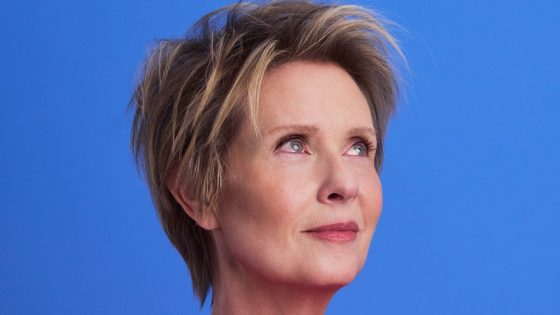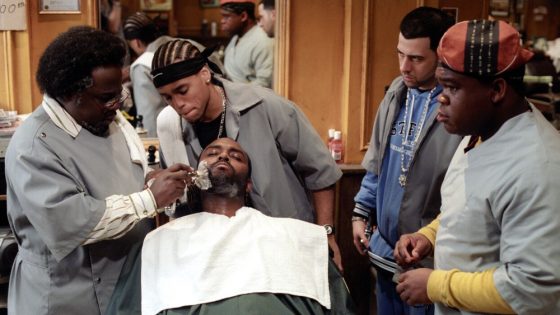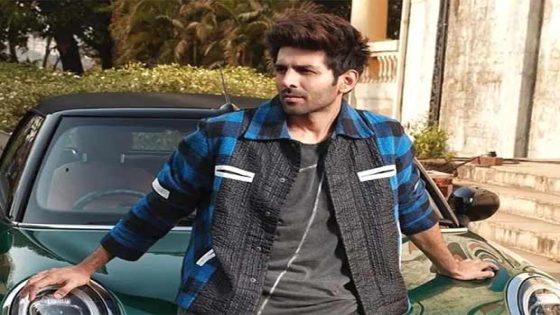In 1984, Cynthia Nixon made Broadway history by appearing in two productions at the same time. Newly graduated from New York’s Hunter College High School, Nixon was cast in two concurrent plays, “Hurlyburly” and “The Real Thing,” each led by legendary director Mike Nichols. For three months, the teenager would cut between theaters, squeezing in a single scene of “The Real Thing” between the two acts of “Hurlyburly.”
Forty years later, the actor and activist’s career has come full circle. Nixon is a series regular on two successful, widely talked-about shows: “And Just Like That,” the follow-up to “Sex and the City” in which she reprises the iconic role of Miranda Hobbes, and “The Gilded Age,” the Julian Fellowes period drama where Nixon plays the gentle, open-hearted Ada Brook. This year, for the first time, the shows will shoot their upcoming seasons simultaneously.
Speaking from her New York apartment, Nixon sounds admirably unfazed. “Once the summer starts heating up, it might get crazy, but right now it’s OK,” she says, her two Emmy awards perched on the bookshelf behind her. “I mean, knock on wood. So far, so good.” Nixon has come to our conversation from a seven-hour costume fitting for “And Just Like That,” which began table reads the previous week. “The Gilded Age” won’t start filming until July, but there’s enough overlap that the two camps are in active conversations regarding her schedule. “I think the plan is to try and do a week here, a week there, so it’s not just ricocheting back and forth on a daily basis,” she reports — though experience has shown Nixon can ricochet if necessary.
Even before this logistical challenge, Miranda and Ada were already a showcase for Nixon’s adaptive range. For audiences accustomed to the caustic, pragmatic Miranda, a part Nixon has inhabited for more than a quarter century, Ada’s wide-eyed romanticism makes for a stark contrast. Then again, Miranda herself has changed dramatically over the years, quitting her corporate law job to pursue legal advocacy full-time and exploring her sexuality through a torrid, marriage-ending, now-concluded affair with nonbinary comedian Che Diaz (Sara Ramírez). Of all the returning characters, it’s Miranda who most embodies the progressive bent that distinguishes “And Just Like That” from its predecessor, expanding the show’s worldview beyond the largely white, straight and well- heeled milieu of the original.
Dan Doperalski for Variety
That’s not a coincidence: both these shifts bring Miranda closer to Nixon, who met her now-wife, Christine Marinoni, while campaigning for New York City public school funding. Nixon has since run for governor of New York state (in 2018) and recently has been outspoken in support of a permanent ceasefire in Gaza, going on a two-day hunger strike last November to raise awareness of potential famine.
“I’ve grown much more like [Miranda] as I’ve grown older, and she’s grown much more like me,” Nixon observes. “It was nothing that I was advocating for, but smart writers, particularly on long-term projects that keep going and evolving, try [to] put as much of the real person in that character as they can, because that’s one of the things that makes television or film or theater so powerful — when the person playing the role has a personal connection.”
During our interview, she wears a T-shirt urging studios to pay writers, actors, crew “and anyone else who makes you all the money,” a visual callback to last year’s work stoppages.
“When you write a character for so long for a specific actress, at some point, it’s just couture,” says Michael Patrick King, showrunner of “Sex and the City” and “And Just Like That.” “You’re just cutting it for them. So, when I look at who Cynthia is, she’s incredibly passionate. She cares. And I put that into the part.”
Ada, too, carries elements of Nixon’s social conscience, a sinew of connective tissue between two very different women. “The Gilded Age” takes place at a historical inflection point, when the newly-made fortunes of industrial robber barons threatened to upend the hierarchy of moneyed Manhattan society. Ada is more curious about and open to these shifts than her older sister Agnes (Christine Baranski), a steely widow allergic to change. Unlike Agnes, Ada doesn’t scoff at the idea of their niece Marian (Louisa Jacobson) taking a paid job as an art teacher, nor serving — gasp! — soup for lunch to their new rector, Luke (Robert Sean Leonard). By 19th century standards, she’s positively forward-thinking.
“Cynthia has a civic responsibility. She takes society seriously. She takes her part in it seriously,” says Fellowes. “That allows her to think about the characters she plays, giving them a certain context — morally, politically — that adds to their depth.”
Back when Nixon was pulling double duty on Broadway, Baranski was her co-star in “The Real Thing,” though the two actors played mother and daughter rather than sisters. “She’s always had that extraordinary esprit,” Baranski says. “She has a sparkling quality to her acting and her personality that I think is such a strong quality of hers. She had it when she was a Barnard student. And all these years later, I’m working with her, and she’s retained that.”
This reunion means that a packed calendar isn’t the only aspect of Nixon’s current work that harkens back to her early career. Leonard, too, is a longtime colleague; he and Nixon met as teenagers at the New York Theatre Workshop and have been friends ever since.

Cynthia Nixon in “The Gilded Age”
Barbara Nitke/HBO
“When there’s someone that you already love and admire and feel so comfortable with, it just enables you to leap off that cliff knowing that they will catch you,” she says. With Baranski, that’s meant building a convincingly lived-in dynamic with all the entrenched tics and petty squabbles of a marriage. With Leonard, it has meant creating an onscreen relationship that progresses from flirtation to actual marriage to illness to grief in just a handful of episodes. It’s a compressed arc that could, in less experienced hands, tip into soap opera. But Nixon’s performance unlocks several new sides of Ada, a person of privileged yet limited life experience who’s used to living in her sister’s shadow.
“It would be, obviously, wonderful for someone who has always wanted to find love and hasn’t to find it at this advanced age,” Nixon says. “But I think it was particularly sweet and precious for Ada, because she’s such a relational person. She’s a domestic person, and she’s so much about her relationships, whether it’s her sister or her relatives or her friends or the people who work in her house.” In crafting the character, Nixon was inspired by her own godmother, who never married but surrounded herself with young people. “[She was] a person who just filled you with so much belief in yourself. No matter what age you were, she was just never tired of hearing about you.”
Ada does get that experience, however briefly. While her loss carries unusual heft in a show as pleasantly lower stakes as “The Gilded Age” can be, Ada still reads as warm-hearted and optimistic, never bitter or defeated.
“She’s a very witty actress, and she has wonderful comic timing,” Fellowes says. “So as downtrodden as Ada may have been at certain points, you’re always pleased to see her come back on screen.”
Besides, Luke’s death sets up a surprising role reversal: with her inheritance, plus Agnes’ son getting swindled out of the family fortune, it’s now Ada who holds the household purse strings, setting up a seismic realignment in Season 3. “Cynthia and I were laughing, imagining that Agnes is up in her room while Ada, who’s such a bohemian — she’s inviting all the stray cats and the unwed mothers into the house,” Baranski says.
Miranda, too, faces new frontiers in the next season of “And Just Like That.” Having divorced Steve (David Eigenberg) and broken up with Che, Miranda is truly single for the first time in decades — and with a bigger, post-heterosexual field of suitors than she’s ever faced before. A dalliance with an audiobook narrator played by Miriam Shor in Season 2 served as a preview of this new normal. “I do feel like our show always works best when people are dating,” Nixon admits. She’s now frequent texting buddies with Ramírez, whose polarizing role led to some of the show’s most widely memed moments. “They created such an amazing character — such a controversial character, but such an amazing character,” Nixon says. “I think they felt, and Michael Patrick felt, that that character had run its course. They came in and shook everything up, and then the arc was completed.”

Dan Doperalski for Variety
Despite her unusually crowded schedule, Nixon continues to balance her television acting work with other projects. She recently performed in her first play in seven years, and she made her TV directorial debut with Season 2 of “And Just Like That.” Nixon has also continued to speak out on Gaza, despite the public and even professional backlash other critics of the war within the entertainment industry have received. “I try to be careful and say I’m very aware of the tremendous pain and suffering on all sides,” Nixon says. “But I don’t want to live in a world where I can’t say [that] the killing of unarmed civilians, 70% of whom are women and children— if I can’t say that that is not OK, I don’t know what kind of a world I’m living in.”
Nixon is also thoughtful about how her primary roles complement one another. “And Just Like That” features subplots about penis pumps and walking in on your teenager having sex; “The Gilded Age” takes place in a straitlaced society where holding hands is the step before marriage. But both, she points out, are worlds dominated by the inner lives and occupational concerns of women, many of them well into middle age.
“I think the main difference is the incredible constraint of ‘The Gilded Age’ and the freedom of the 21st century women in ‘And Just Like That,’” she observes. Though that doesn’t mean one story is any more or less resonant than the other: “The interesting thing is, when you’re coerced and constrained and there are so many rules to follow, sometimes very little things can seem enormous.”
Miranda may have more options than Ada, but Nixon affords both the same intensity of feeling.
Source Agencies



